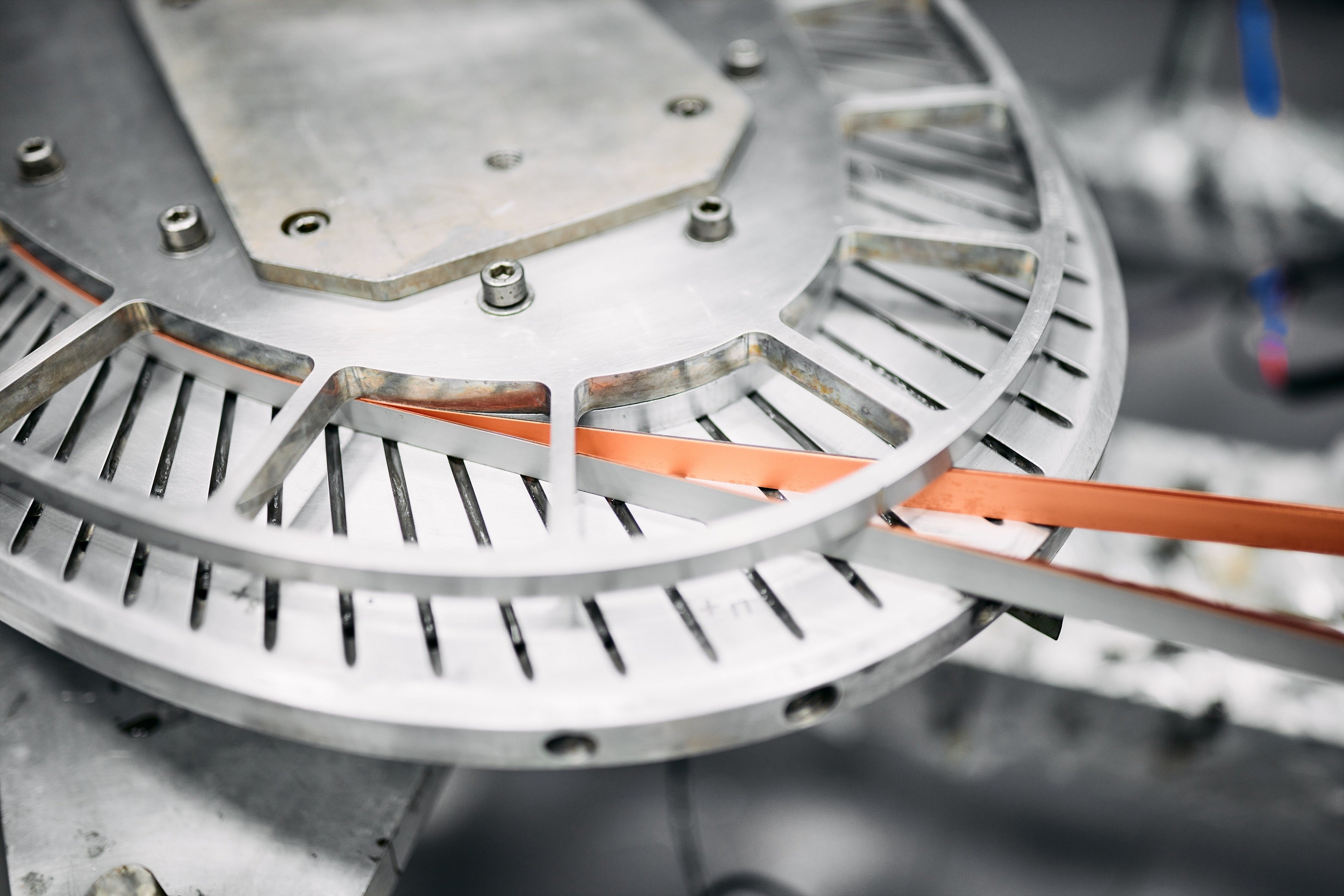How a ‘holy grail’ scientific breakthrough could still pave the way for limitless energy and floating trains
A team of scientists believed they had made a breakthrough that would create a new era for humankind – on this occasion they were wrong. But superconductors still hold the key to huge changes in how we live, writes Andrew Griffin


"We believe that our new development will be a historical event that opens a new era for humankind," a team of South Korean scientists wrote at the end of July. It was a bold statement about an equally bold claim.
The finding that had excited them so much was so-called LK-99, a new kind of superconductor that was going to change the world. Unlike other superconductors it could operate at room temperature and ambient pressure. In short, it was the ‘holy grail’ of superconductivity.
It was going to pave the way for futuristic maglev trains (which float on magnets), better supercomputers, vastly more efficient power grids and more.
The only problem was the team, from South Korea’s Quantum Energy Research Centre, was wrong. Within days they had gone from being celebrated to being a highly-publicised cautionary tale. The material they thought they had found was actually just behaving strangely because of impurities, it turned out.
But superconductors – which conduct electricity with no resistance and become very powerful magnets –continue to fascinate scientists and despite recent failures, engineers are harnessing the strange behaviour of superconductivity to work on fusion energy and other potentially transformative breakthroughs. Could it be that some future successor to the South Korean team will finally do it?
***
Superconductors were first discovered in 1911, by Dutch physicist Heike Kamerlingh Onnes. It came out of a broader interest in what happens to matter when it is chilled to very low temperatures, work which would win Kamerlingh Onnes a Nobel prize shortly after.
His breakthrough came when the mercury he was working on "passed into a new state, which on account of its extraordinary electrical properties may be called the superconductive state".
More than a century on, scientists can still not fully explain superconductivity: the field is fairly old, but far from mature. After Kamerlingh Onnes first discovered the phenomenon, thousands of superconducting materials have been identified. The difficulty, often, is actually getting them to do anything useful and only five materials are used in practical ways today.
There is usually a gap of decades between actually finding a new material and deploying it. The first decade tends to be made up of academics in universities working to fabricate small chunks of it, investigating how it might actually perform as a superconductor, investigating its chemistry, and working out how it might be used.
Private industry tends to arrive in the second decade, looking at whether it might be possible to make it industrially, so that it can be produced in the long, robust and quality lengths actually needed to use it. The third decade then sees the beginning of its use in the real world.
Understandably, hype around superconductors tends to go up and down with the publication and retraction of new claims, which might speed up this slow process.
Some have become sceptical. As excitement about LK-99 abounded, some scientists traded a sarcastic, spoof paper from the Journal of Immaterial Science that joked about a material that “has an unrivalled capacity to produce platitudes and hyperbole from science communicators and journalists, as well as some minor implications for the electronics and power industries”.
But that was in marked contrast with the reaction to the paper on social media, which is where LK-99 really found its fame. Much of the promotion of the paper was not from superconductor experts at all, but from Silicon Valley technologists hopeful for a big breakthrough.
The tone of the social media posts – includig from OpenAI boss Sam Altman – was redolent of the previous hype cycles that have come over recent years: for cryptocurrency and bitcoin; for NFTs; for the metaverse; for artificial intelligence in general. The tech world has faced intense criticism and worry over the fact that it seems to be failing to come up with exciting new innovations, and the new superconductor looked like the latest candidate.
In fact, superconductivity will be needed to underpin hyped technologies from Silicon Valley: AI demands ever-faster computers, and it is only academic work like that on superconductors that will provide it.
***
The South Korean team did not provide the breakthrough that Silicon Valley was hoping for. To create LK-99, they had mashed together copper, lead, phosphorus and oxygen – simple ingredients, through a simple process. But the recipe left behind copper and sulphur, which joins together to make copper sulfide. That unintentional extra compound can lead to behaviour that looks like superconductivity, but isn’t.
It was a simple and seemingly innocent mistake, which was revealed through the fastidious follow-up work of scientists eager to check whether the original team’s extraordinary claims were actually real. It all happened remarkably quickly: their claims went viral at the end of July, and by mid-August they had been largely rejected.
But while the excitement over LK-99 turned out to be wrong, the hype around big breakthroughs has not always ended in disappointment.
Scientists used to believe that superconductivity would require incredibly cold temperatures, which in turn meant that their practical use was limited.
That all changed in 1986 when scientists found new ceramic materials that still needed to be cold but not drastically so; that meant that they could be chilled with liquid nitrogen, which also meant they could be used more easily and cheaply. A year later the team behind it had been won a Nobel Prize – the fastest recognition ever – and had started the field of research which provides many of the useful superconductors we have today.
Perhaps the most exciting use now is in nuclear fusion – itself the kind of potentially transformative breakthrough that sets the world alight. That technology looks to create the same kind of processes that happen in the Sun, but to do so in controlled and harnessed ways that would turn them into a sustainable and radical new energy source.
Doing that requires heating up hydrogen plasma to above 100 million degrees. At that point, the same reactions that happen in the Sun occurs, and it is from this miniature, artificial star that energy is released.
"In order to do that, you need very powerful electromagnets to basically hold this star up, so it doesn't touch the walls and allows you to hear it," says Greg Brittles, the principal magnet engineer at Tokamak Energy, an Oxford-based company that is among the most compelling hopes for fusion energy.
"And to make powerful magnetic fields, you need these revolutionary superconducting materials that can carry really high current densities, but without burning through all the power that you're producing from the fusion reaction." Nuclear fusion wouldn't be quite so revolutionary if you ended up wasting just as much energy in producing the magnetic fields required for it to actually work.
"The game-changing revelation that has happened in the last couple of decades is the emergence of these high-temperature superconducting materials."
Brittles joined Tokamak Energy in 2016, and the performance of the materials has gone up by four to five times, "and it shows no signs of slowing down".
Recently, some 56 kilometres of tape arrived at Tokamak Energy. It is a high-temperature superconductor, or HTS, and at the moment about half of the company's team are taking that tape and building it into magnet structures that aims to power a world-first superconducting magnet system. That system is known as Demo4 and standing two metres across and two metres tall.
Demo4 will produce a magnetic field nearly a million times stronger than that of the Earth. That is required to control the system’s extremely hot hydrogen fuel, which turns into a plasma several times hotter than the centre of the Sun. When it is switched on next year, Tokamak Energy hopes that it will provide findings that could allow for clean and affordable fusion power in the 2030s. And it is all done with high-temperature superconductors that a few decades ago were thought not to exist.
Researchers keep looking for yet more of those revolutionary materials, with the hope of putting them to even more revolutionary uses. Those who work on superconductors remain hopeful: when the Korean team announced their breakthrough, the only thing equal to the doubts was the desire that they were right. In the end, LK-99 might have met with resistance, but superconductors still have an intense magnetic pull.






Join our commenting forum
Join thought-provoking conversations, follow other Independent readers and see their replies
Comments